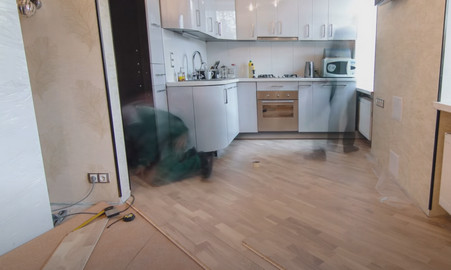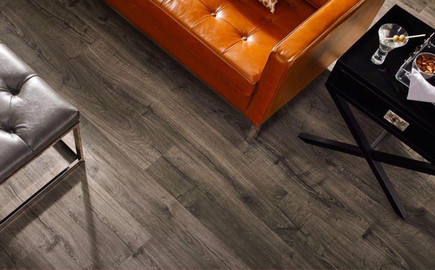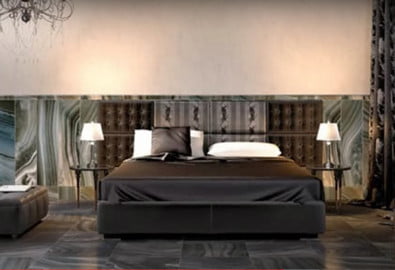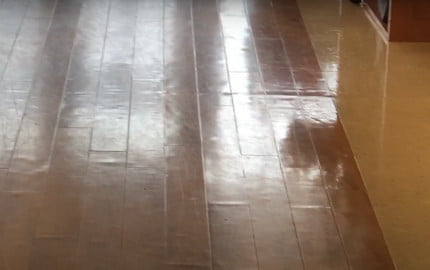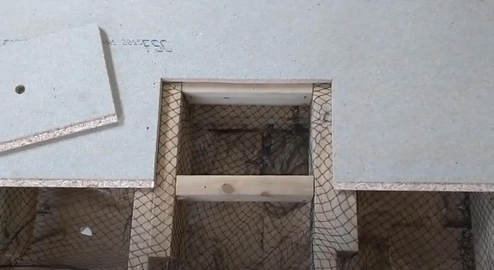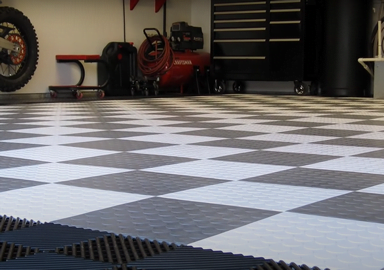Which flooring is best for your home?
The flooring in your home is a very important part of interior decor. It can also be a reflection of your home’s history and culture. The flooring you choose for your space can also have an impact on the way it feels to live there, and whether or not you’ll enjoy it.

If you’re still wondering does vinyl flooring needs underlayment, this article will explain what underlayment is and how it benefits vinyl flooring.
Whether you are looking for new carpet, vinyl, ceramic tiles, or hardwood flooring options, this article will provide some information that will help you make an informed decision.
Considerations when choosing what flooring is best for your home
The type of flooring you choose will depend on your needs and preference. Here are some common considerations when looking for the best flooring for your home.
1. Where is your home located?
Where you live can indeed have an effect on the type of flooring you choose. For instance, you are more likely to find hardwood floors in New England, carpet in Florida, and ceramic tile in Arizona.
Different climates also create different flooring options. For example, if you live in a place that gets too hot in the summer or too cold in the winter, you may want to consider hardwood flooring instead of carpet.
2. What is your budget?
Another factor in choosing the right floor for your home is your budget. Even though you may want to change all of the floors in your home, it can cost a lot of money to do so.
You may also need to change your flooring on a budget if you find that you are unable to afford to put a new floor in one room.
3. What is your style?
If you like a specific style or color, you may want to choose a flooring that supports that look. For example, if you like a bold and vibrant color scheme, you can have that in your home in many ways. You can go with bold and bright colors for accent pieces, or even have a bold accent in the room you sit in.
4. How busy is the room?
If you have a room that can get plenty of traffic, such as a living-dining area in your home, you may want to consider hardwood floors or carpet that will look good even if they are walked on.
If you have a lot of time and money to spend on remodeling, replacing your flooring can be one way to add value to your home.
5. Do you have pets?
If you have pets, it’s important to choose a flooring that is easy to clean and does not scratch easily. For example, if you have a pet such as a cat or a dog, you may want to consider vinyl or tile.
Types of Flooring
Each room in your home may need different types of flooring. For example, hardwood is popular because of its classic look but will hardly hold up to a room that is prone to moisture or receives heavy traffic daily. Here’s a look at the types of flooring, their pros, cons, and their costs.
1. Hardwood
Solid hardwood is made from a combination of hardwood trees that have been cut, split, and then pressed together into a solid block. It is denser than most flooring and has a warmer tone to it.
Pros – Hardwood flooring is available in many different species, colors, and styles. It is also very durable and can be finished to have a glossy or matte appearance. While it is not as eco-friendly as other options, it is a very cost-efficient flooring option. Some examples of hardwood include cherry, maple, oak, and oak-look tile.
Cons – Hardwood comes with two main cons: It is more fragile than other options and maybe more expensive. They easily scratch and dent. This solid wood flooring also tends to warp if exposed to moisture for long periods of time. It can also have a more distinct “woody” odor.
Cost – Solid hardwood flooring is one of the more expensive flooring options. It doesn’t come in a variety of colors or styles like many other options, so it may cost a bit more to choose a hardwood flooring option. This type of flooring will cost around $3.00-$14.00 per square foot.
Best Use – Hardwood flooring is best used in spaces such as living rooms and bedrooms since there is less foot traffic and where they are not prone to rough handling such as dragging chairs or dropped heavy objects.
2. Carpet Flooring
Carpet comes in a wide variety of colors and materials. They also vary in thickness and density. Here are common types of carpet:
*Wool – Wools come in a variety of colors and qualities, including hand-woven carpets and wovens. Hand-woven carpets are created manually, so they have a much softer feel to them.
*Acrylic – Acrylic carpet is made of synthetic material that is easy to clean and available in a wide variety of colors. This carpet type is resistant to mold, mildew, and insect damage.
*Polyester – Polyester carpets are synthetic fibers that have a soft texture for a luxurious feel. It is resistant to moisture and can be dyed in different colors.
*Polypropylene – Polypropylene is a lightweight fiber that is resilient and durable. It can be dyed in a variety of colors.
Pros – Carpet flooring is not usually as expensive as hardwood, but it does offer some benefits of its own. It is comfortable and soft underfoot and can be purchased in different textures, colors, and styles. It is also a more eco-friendly option than hardwood flooring.
Cons – Carpet can be more environmentally friendly but comes with a few cons, too. It can be used as an affordable flooring option but will not withstand the traffic or heavy use of a home. The carpet can also be a bit smelly and is hard to clean than solid wood flooring. It can also harbor dirt and allergens that can be a health hazard for some people.
Cost – Carpet prices can vary by the type of carpet you choose. For example, short-nap wool carpets range from around $3.00-$6.00 per square foot, while Moroccan wool rugs can cost about $2.50-$4.00 per square foot.
Best Use – Carpet is best used in rooms that are not high-traffic areas such as a bedroom or bath.
3. Ceramic Tile Flooring
Ceramic tiles are a hard material that is made from a mixture of clay that’s fired. This flooring material is very durable and hard to scratch or dent. Tiles are available in different sizes, textures, patterns, and colors. Here are common types of ceramic tiles:
*Glazed Tile – Glazed tiles are glossy on top because of their glass-like protective coating. This type of ceramic tile does not require any maintenance.
*Porcelain – Porcelain is a fired clay material that can either be made as a glazed or unglazed tile. It is more durable and stain-resistant but needs to be maintained and cleaned regularly because it shows dirt easily.
*Quarry Tile – This is an unglazed ceramic tile with a rough surface texture and is slip-resistant. It is suitable for kitchens and bathrooms because it is easy to clean and maintain.
*Terracotta Tile – This tile has a sandy clay or soil-like color and texture. It requires regular cleaning because of its porous nature.
Pros – Ceramic tile is a very durable flooring option and can last for years, even when it is used on a daily basis. It can also be made to look like other materials such as wood and stone, though it won’t feel like real wood or natural stone.
Cons – Tiles are cold underfoot and it is very easy to damage them if you drop something on them or spill something on them. In case of a major break, there is no way to repair and replace the entire floor without replacing the entire tile.
Cost – Ceramic tile is around $1.50-$15 per square foot, making it a bit more affordable than other options such as hardwood flooring, but more expensive than carpeting.
Best Use – Although it can be used in any room, it is commonly used in kitchens and bathrooms, as well as in high-traffic areas.
4. Vinyl Flooring
Vinyl is a resilient flooring made from a layer of plastic that contains fibers. This layer is then affixed to a backing material such as tile. This product is considered durable and has a low cost. There are different forms of vinyl flooring such as:
*Sheet vinyl flooring – This is made from a single layer that you cut to size and glue down to the subfloor.
*Luxury vinyl flooring – This is made from thicker vinyl and clicks into place similar to engineered wood. Luxury vinyl planks are available in a variety of styles and colors.
*Peel and stick vinyl flooring – This type is made from a thin sheet of vinyl and can be applied easily.
Pros – Vinyl is very durable and will last for many years. It is also easy to clean, and it doesn’t need to be waxed or refinished. It is not prone to water damage. Compared to other flooring options, it is one of the least expensive options.
Cons – Vinyl can be a bit noisy as it slides and squeaks. Also, it is not hypoallergenic, so it can be more eco-unfriendly than other options.
Cost – Vinyl is one of the most affordable flooring options. It ranges from $0.05-$5.00 per square foot, making it the second most popular option behind carpeting.
Best Use – This type of flooring is best used in high-traffic areas, such as hallways and closets. It is also recommended for basement flooring since it is resistant to moisture.
5. Cork Flooring
Cork is a renewable product and made from the cork of oak trees. It is biodegradable, so it is an environmentally friendly option. Cork flooring comes in a variety of colors that range from pale grays to deep reds and everything in between. It comes in two forms: tiles and planks.
Pros – Natural cork flooring is a great choice for the environment. Cork is one of the most renewable materials, and it is also easy to come by in nature. Cork fits in with the natural interior design. Cork flooring is also resistant to water and scuffs.
Cons – Cork is soft, so it’s not a good option for homes with pets or children. It can also be damaged if scratched too vigorously. This is why it’s best to use cork flooring paired with a carpet. Cork floors are also harder to install.
Cost – In general, cork is the least expensive flooring option. It’s also available in a wide range of styles and colors. Cork costs between $3.00 – $12.00 per square foot.
Best Use – Cork is a great choice for hallways, bathrooms, kitchens, and bedrooms. It can be installed on any type of subfloor or it can be used to line a closet.
6. Bamboo Flooring
Bamboo is grass that is available in different species. It is more eco-friendly than many other types of flooring because it is renewably sourced, durable, and resistant to water. Bamboo has a variety of colors from yellow to dark browns.
Pros – Bamboo is a good flooring option because it is also very durable, so it can be very cost-efficient too. It’s a biodegradable flooring option that does not require any chemicals or bleaches. Bamboo flooring is also somewhat resistant to water. Bamboo is also hypoallergenic, so it can be good for homes with children and pets.
Cons – Bamboo can be damaged if it is cut too aggressively or dragged across the floor by careless children. It does not feel as nice as other options. It isn’t the best option for homes with pets. Its durability also varies because bamboo can be affected by fire, insects, or fungus.
Cost – Bamboo flooring is less expensive than many other options. It’s also eco-friendly and durable. Bamboo flooring will last upwards of 100 years. It costs around $1.00 per square foot.
Best Use – This type of flooring is recommended for homes with high traffic areas, such as hallways and bathrooms. However, it is not good for kitchens or mudrooms as it is only suitable for barefoot usage.
7. Slate Flooring
Slate is a type of natural stone that is very durable, waterproof, and low maintenance. It comes in a variety of colors and patterns.
Pros – Slate is one of the most durable flooring options and requires little cleaning. The surface of the slate is very flat, and it does not need to be leveled, making it very easy to install. It’s a natural rock that is easy to work with and adds resale value.
Cons – Slate requires a lot of cleaning and maintenance. It will not stain, but it does need to be hosed off periodically. It’s very heavy, so it can be difficult to transport.
Cost – Slate is a very expensive flooring option. It costs around $4.00 – $10.00 per square foot, is difficult to install, and requires professional maintenance. Professional installation may cost $10.00 – $15.00 per square foot.
Best Use – Slate is best used in high traffic areas since it can be washed and is very resistant to scratches. It’s also a good option for an entryway or mudroom.
8. Laminate Flooring
Laminate flooring is made of a layer of hardwood, vinyl, or some combination of both in some form. This type of flooring is lightweight and easy to install. It’s also very durable as well as resistant to scratching. Laminate planks come in two forms, either planks or tiles.
Pros – Laminate flooring is easy to maintain and cheap. It tends to be lightweight, which makes it more comfortable on the feet. This flooring option is resistant to moisture, too.
Cons – Laminate flooring can wear quickly if not installed properly. It’s not as durable as other options. It’s not as eco-friendly as other options. Laminate may emit formaldehyde fumes when it is being installed.
Cost – It is less expensive than many other options. Laminate flooring’s average cost is around $1.00 per square foot. Laminate flooring is reasonably durable. Laminate can last upwards of 25 years.
Best Use – Laminate is among the popular flooring options for high-traffic areas, such as kitchens and entryways.
9. Engineered Wood Flooring
Engineered wood is made of plywood. It’s made from layers of wood that are glued and pressed together. This type of flooring is very durable and resistant to moisture. You can choose from a variety of wood types such as strips, planks, and parquet tiles. They can be nailed down, glued, or installed as a floating floor.
Pros – Choosing engineered hardwood flooring can be a great way for homeowners to save money and do good for the environment. Engineered hardwood will not expand or shrink, is resistant to water damage and scratches. With wide boards, engineered wood can provide a solid appearance at a lower cost than full hardwood flooring.
Fiber cement (organic polyester) is a new type of composite material, similar to vinyl flooring. It has a high density and durability and offers the best of both worlds: the look of hardwood but with a lower cost.
Cons – Although engineered wood is a good option for homeowners, it is not recommended for the long term. The wood is made by combining several layers of lumber so it can look like hardwood. This adds to the price tag. But unlike real wood, engineered wood easily scratches and dents.
Cost – The cost of engineered wood flooring will not be the most economical, but it can be a great way to add value to your home without spending too much. For an engineered wood, you will spend around $4.00-$5.00 per square foot.
Best Use – Engineered wood flooring is a great option for kitchens and bathrooms. The wood grain will add visual appeal to any room. It is also a good choice for basement and enclosed porches.
10. Linoleum Flooring
Linoleum is made of natural materials and is a great eco-friendly option for homeowners. It’s made from linseed oil, jute, cork dust, wood flour, and pigments. Linoleum is available in different sizes such as tiles or planks. Linoleum is available in three forms: sheets, tiles, and planks.
Pros – Linoleum is a classic flooring style that is simple to install and durable, but it’s not the best option for any room.
Pros – Since linoleum is not a clean-floor material, it will need to be cleaned regularly. The flooring can be both scratchy and cold, and it is not an eco-friendly option.
Cost – Linoleum floors are cheap, which is what makes them popular in many bathrooms. The flooring can also be found in several colors that match your decor or paint. You are expected to pay around $2.00 -$5.00per square foot.
Best Use – Linoleum flooring is a good choice for kitchens, family rooms, and bathrooms.
Conclusion
At the end of the day, it’s more important to select flooring that will not only look great in your home but is also practical and durable. The recommended material you choose for your floor is one that fits all those criteria and has the ability to withstand the wear and tear of daily life.
